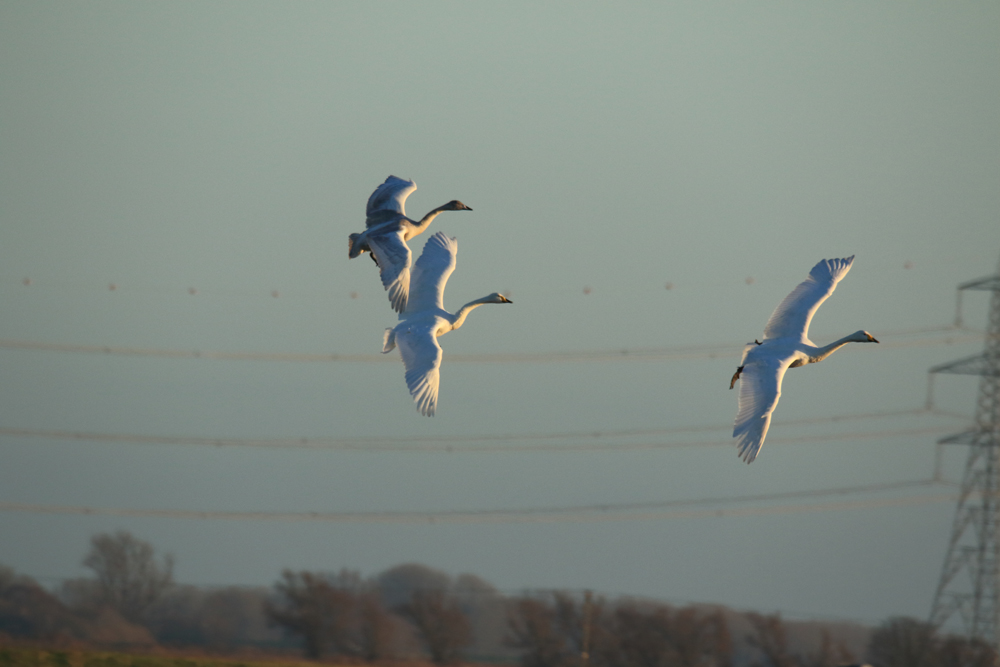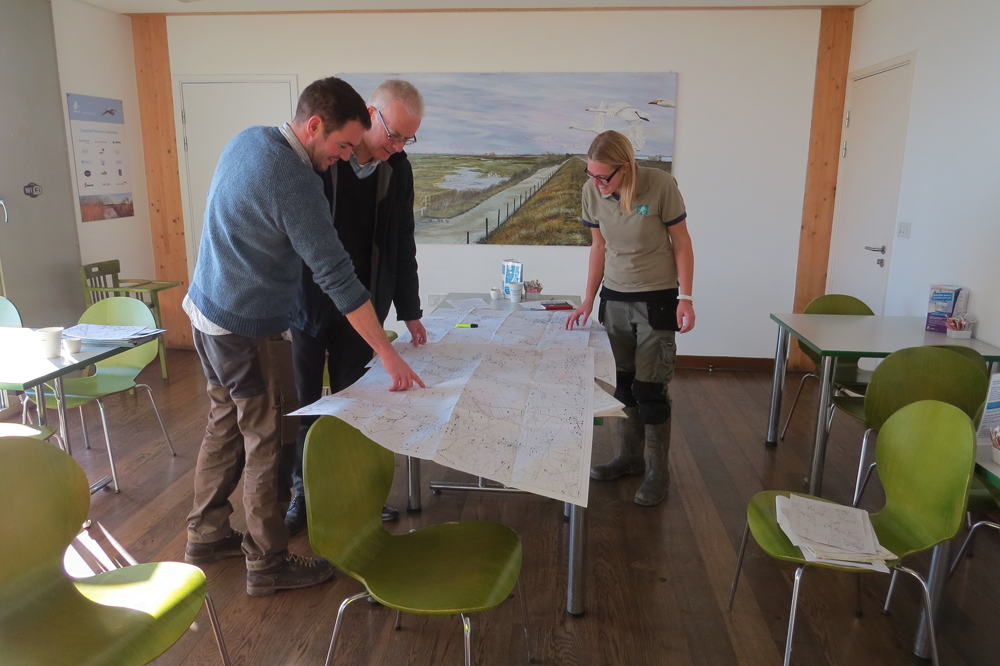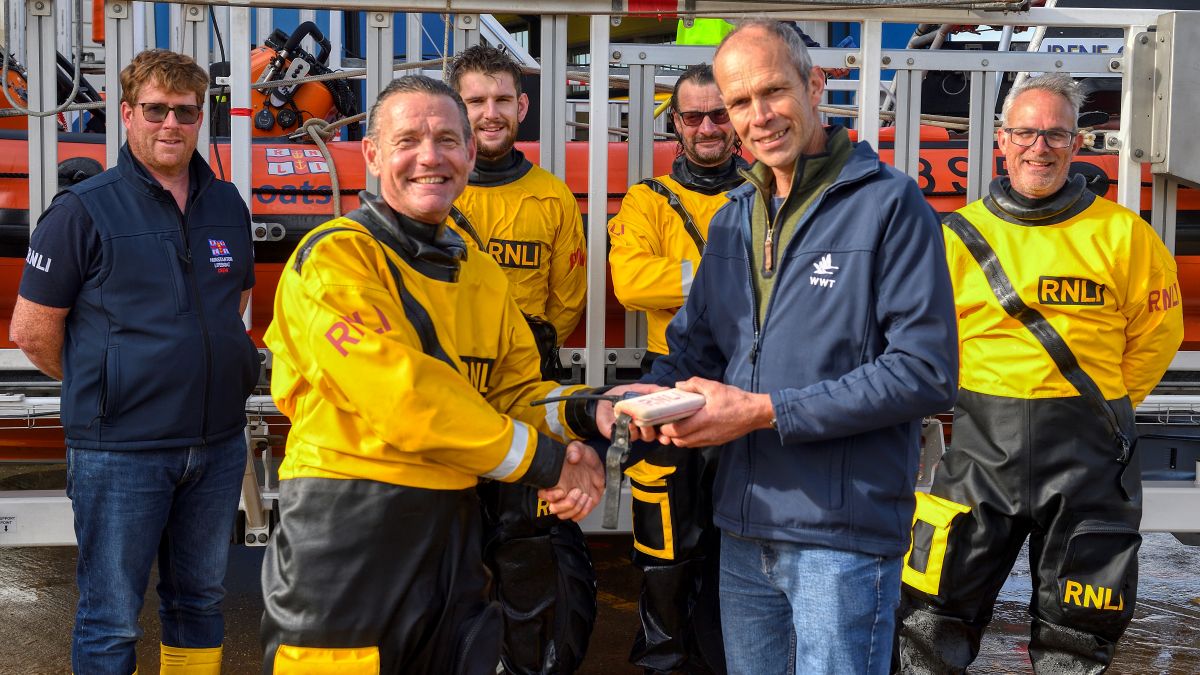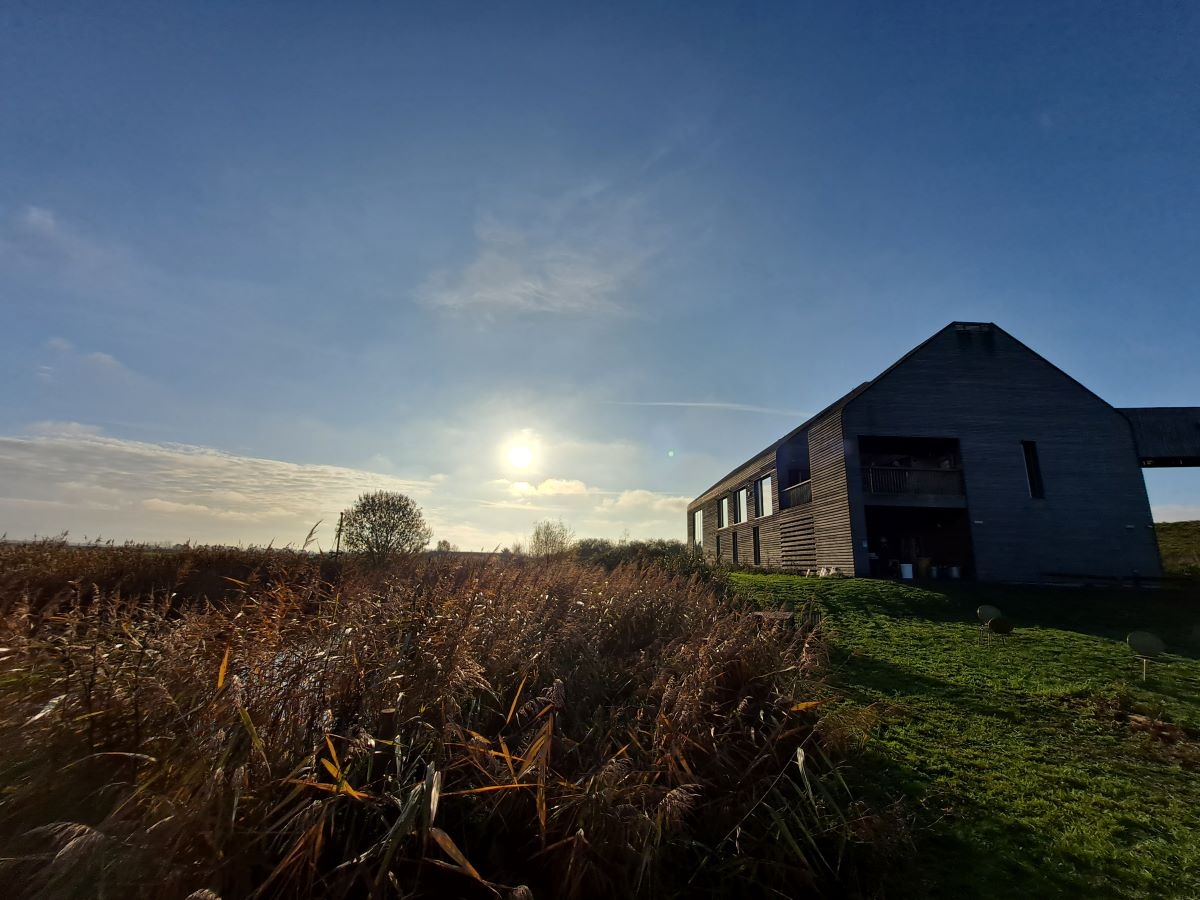Partnership works to keep swans in the air
 This winter further measures are being taken to reduce the chances of swans flying into overhead power lines, which result in unnecessary deaths or serious injury. Co-operative working between WWT Welney Wetland Centre and UK Power Networks means that priority areas are being quickly identified so that action can be taken.
This winter further measures are being taken to reduce the chances of swans flying into overhead power lines, which result in unnecessary deaths or serious injury. Co-operative working between WWT Welney Wetland Centre and UK Power Networks means that priority areas are being quickly identified so that action can be taken.
Thousands of swans migrate to the Fens each winter to escape snow and ice that covers their breeding grounds. The biggest concentration of swans is around the wetlands of the Ouse Washes, an incredibly important roosting site for both whooper swans and Bewick’s swans.
But the swans don’t just make use of the wetlands; the arable land surrounding the Ouse Washes provides vital feeding grounds to keep the birds fuelled up through winter. Flocks of swans can often be seen feeding in fields on the left-overs from harvesting sugar beet, potatoes and cereals. This means that at least twice a day the swans make the journey from one site to the other by the most direct route possible.
Leigh Marshall, Centre Manager at WWT Welney, says:
“Swans change the sites that they feed at throughout the winter season, as new sources of food become available. This in turn alters where they come in to roost, so the partnership between WWT Welney and UK Power Networks is of long-term importance, as the flight patterns of swans shift across our area.”
Kevin Pettit, who helps plan power line routes for UK Power Networks, says:
“We work closely with WWT Welney to identify flight routes that are experiencing problems each season and install bird flight diverters to help prevent birds flying into power lines.
“More bird flight diverters are being installed in priority areas this month. The latest bird diverters have spinning reflectors, with glow-in-the-dark panels, which makes them more visible for a time after dusk, when swans are more likely to collide with power lines.”
 UK Power Networks has also identified sections where replacement of the lines with new covered wires will benefit bird-life and improve the reliability of electricity supplies. Areas where UK Power Networks has carried out trials using the new covered wires, around Welney, have shown a reduction in birds flying into the lines (as they are slightly more visible to the birds) and a reduction in power cuts. The proposed new sections are being surveyed, ready for work to start as soon as UK Power Networks can gain access to the farmland.
UK Power Networks has also identified sections where replacement of the lines with new covered wires will benefit bird-life and improve the reliability of electricity supplies. Areas where UK Power Networks has carried out trials using the new covered wires, around Welney, have shown a reduction in birds flying into the lines (as they are slightly more visible to the birds) and a reduction in power cuts. The proposed new sections are being surveyed, ready for work to start as soon as UK Power Networks can gain access to the farmland.
January is the peak month for swans wintering in the UK, counts conducted by WWT and RSPB on the Ouse Washes show that 7,885 whooper swans and 2,813 Bewick’s swans are roosting on the wetlands at night. Both species of swan are affected by this issue, and measures taken to prevent further swan collisions could have benefits for other bird species too.
In the next few weeks the swans will be preparing for their spring migrations to Iceland and Artic Russia, spending more time on the wetlands feeding on aquatic plants. Visitors can enjoy watching the swans from the visitor centre and hides at WWT Welney, with the biggest numbers seen at dusk as extra flocks fly back from the fields. Guides are available at the following events to help you get closer to and learn more about these incredible creatures:
- Commentated wild swan feed, 3.30pm daily, until Sun 12 March, shortly followed by the flight in at dusk.
- Floodlit commentated wild swan feed, 6.30pm Thurs-Sun each week until Sun 26 February.
- Commentated wild bird feed – 12noon daily, until Sun 12 March
- Swan’s Awake mornings, Sat 11 & Wed 15 February, 6-9am, watching the swans fly out from the reserve between dawn and sunrise. £10 per adult, £5 per child.



